Setting the right rent for your property in the UK can be tough. Rental prices went up by 4.2% in 2022. It’s key to find a balance between making a profit and being fair to tenants. So, how do UK landlords figure out the best rent for their properties?
Landlords should aim for a rent that’s about 0.8% to 1.1% of the property’s cost. For example, a £100,000 home should earn between £800 and £1,100 a month. But, this is just a starting point. The real profit depends on the property’s location and condition.
Key Takeaways
- UK landlords need to determine the appropriate rent price for their properties to ensure a good return on investment.
- The rent price should be close to 0.8% – 1.1% of the property’s purchase price.
- Location, property condition, and local market conditions are key in setting rent prices.
- UK landlords should keep in mind the average 3% annual rise in rental prices.
- Properties priced near the market average rent out about 15% faster than those priced higher.
- Being close to public transport and modern amenities can lead to higher rents.
Understanding the UK Rental Market Landscape
The uk rental market is growing fast, with private rents up by 5.2% in 2024. To get a good picture, landlords need to look at different areas and the economy. Knowing how much rent to charge is key.
Renters now spend about 32.7% of their income on rent. This shows how vital it is to think about what tenants can afford. The market is expected to calm down, with growth slowing to 2.5% by 2028.
Current Market Trends and Regional Variations
More rental homes are being built, which is helping slow down rent increases. But, rising living costs are making homes less affordable everywhere. Tenant demand is dropping because of these affordability issues and economic worries.

Impact of Economic Factors on Rental Prices
Things like inflation and interest rates really affect how much rent costs. The Bank of England thinks interest rates will drop to about 4.3% by 2025. This could change the rental market. Landlords need to think about what makes their property stand out, like amenities and standards.
To stay ahead, landlords should keep up with market trends and adjust their rent plans. By understanding the market and different areas, they can keep their properties full and earn more.
Essential Factors That Influence Rental Values
Several factors affect the rental value of a property. Property valuation is key, helping landlords know their property’s worth. This affects how much they can charge for rent. A property in good condition with modern features can get a higher rent than one that needs repairs.
The rental property evaluation looks at the property’s state, location, and features. For example, properties near work, with good transport and family-friendly spots, often have higher rents. But areas with few jobs and bad transport may have lower rents.
Important factors that shape rental values include:
- Location: How close it is to work, transport, and local amenities
- Property condition: Its age, upkeep, and overall condition
- Amenities: The presence of modern features, like furnished places or recent updates

Landlords can set smart rent pricing by thinking about these points. This way, they can get the most from their property. Regular property valuation and rental property evaluation help them stay ahead in the market and adjust prices as needed.
Conducting a Comprehensive Local Market Analysis
To find the right rent for a property, a detailed local market analysis is key. This means looking at similar properties, understanding the area’s demographics, and checking local amenities and transport. A deep dive into the rental market gives landlords the info they need to set their prices wisely.
Appraising the property is a big part of this. It’s about looking at the property’s condition, size, and features to figure out its value. This way, landlords can set a price that’s competitive and fair. Also, looking at local property prices and the property’s condition and amenities helps set the right rent.
- Regional variations in rental property trends
- Seasonal demand peaks for rental properties
- Desirable amenities, such as proximity to public transportation and schools
- Property condition and maintenance
By keeping these in mind, landlords can craft a pricing strategy that works for everyone. This leads to a successful and profitable rental experience.
How Can UK Landlords Determine the Appropriate Rent Price for Their Properties Through Professional Valuation
UK landlords can find the right rent for their properties with property valuation. This method gives a current price to help figure out the rental yield. A professional valuer looks at the local market and gives a rental property evaluation. They consider the property’s location, size, and condition.
To do a rental property evaluation, landlords should look at local property prices. They should think about supply and demand, investor feelings, and the economy. They can also talk to chartered surveyors. These experts use big databases to compare rent pricing trends in the area.
Some important things that affect rent pricing include:
- Location: Properties near popular spots, transport, or amenities can get higher rents.
- Size and condition: Bigger or better-condition properties can get more rent.
- Demand: Places with lots of people wanting to rent can have higher prices.
By looking at these factors and getting a professional property valuation, UK landlords can set the right rent. This makes sure their prices are competitive in the market.
For instance, a property worth £200,000 with an annual rent of £14,400 has a 7.2% rental yield. This is seen as good. Landlords can use this info to adjust their rent pricing strategy. This helps attract tenants.
| Location | Average Rent | Rental Yield |
|---|---|---|
| UK | £1,229 per month | 7-8% |
| London | £2,077 per month | 6-7% |
Utilising Online Tools and Resources for Rent Price Research
Online tools and resources are key for setting the right rent price for a property. A deep dive into the rental market is vital. It helps understand local trends and inform pricing strategies. This way, landlords can make smart choices about their properties.
Comparing properties online is a big part of rent price research. It involves looking at similar properties, neighbourhoods, and local amenities. Rental value calculators also help estimate income, aiding in pricing decisions.
Property Portal Comparisons
Rightmove and Zoopla are great for finding rental property info. They show prices, amenities, and locations. By comparing these, landlords can spot market trends and adjust prices.
Rental Value Calculators
Rental value calculators estimate a property’s rental income. They consider location, size, and condition. These tools help landlords set the right price and get the best return.
Having a clear pricing strategy is key in the UK rental market. Online tools like property portals and calculators help landlords stay competitive. They ensure a good return on investment. Whether you’re new or experienced, understanding the market and setting the right prices is essential.
Calculating Return on Investment (ROI)
To figure out if a rental property is profitable, you need to calculate the return on investment (ROI). This means dividing the yearly rental income by the property’s value and showing it as a percentage. For example, if a property makes £24,000 a year and costs £400,000, the ROI is 6%.
Knowing your rental income calculation is key. It shows how much you can earn. A property appraisal is also vital to find out what the property is worth. You can get a professional to appraise it or look at similar properties in the area.
After finding the property’s value, you can set a rent price using a rental pricing strategy. This strategy should consider the property’s features, location, and who you’re aiming to rent to.
Here are some important things to think about when calculating ROI:
- Annual rental income: £24,000
- Property value: £400,000
- ROI: 6%
By looking at these points and planning a good rental pricing strategy, landlords can increase their ROI. A detailed property appraisal and correct rental income calculation are key to success.
Property Features That Command Premium Rates
Many factors influence the rent price of a property. Understanding property valuation and rental property evaluation is key. In the UK, properties with top amenities, energy efficiency, and modern features can greatly increase the rental value.
Features like prime locations, in-demand use classes, and favorable lease terms can lead to higher rents. Properties in sought-after areas, with good schools, parks, and shops, often have higher prices. Also, properties with the latest amenities and recent updates are more valuable.
Recent data shows that prime locations can raise rents by 20-30% compared to less desirable areas. Modern amenities can boost rental value by 10-25%, depending on the market and property type. These figures underline the role of property features in setting rent prices.
Landlords can adjust rents by including utility bills and other costs in the total price or as separate expenses. Knowing how property features affect rental value helps landlords set fair prices. This leads to a successful rental property evaluation and valuation.
Legal Considerations in Rent Price Setting
UK landlords need to know the legal rules for setting rent prices. The Renters’ Rights Bill, introduced in September 2024, aims to make the rental market more stable. It limits rent hikes to once a year and removes Section 21 “no-fault” evictions.
Landlords should learn about the new rules. This includes having to post a fixed asking rent and not discriminating against tenants. The Decent Homes Standard will also apply to private rentals. Landlords must fix health issues like mould and damp quickly.
Key Implications for UK Landlords
- Limitations on rent increases to once per year
- Abolition of Section 21 “no-fault” evictions
- Requirement to publish a fixed asking rent
- Prohibition on discriminating against tenants based on family status or income
Understanding these laws and doing a rental market analysis helps landlords set fair rents. It also ensures they follow the new rules.
Strategies for Regular Rent Reviews
Regular rent reviews are key for landlords to adjust rents and get a good return. A smart rental pricing strategy can boost rental income. To review rents, landlords should look at local prices, the property’s condition, and amenities. They should also use a rental income calculation to find the best rent.
Landlords can ask for rent hikes in three main situations: Lease Renewal, Market Rent Reviews, and Index-Linked Increases. Knowing how to appraise property is vital. This helps landlords make smart choices about their rental pricing strategy.
Important things to think about during rent reviews include:
- Looking at local property prices and trends
- Assessing the property’s condition and amenities
- Using a rental income calculation to set the best rent
- Understanding the property appraisal process
By using these strategies, landlords can ensure a good return on investment and keep a good relationship with tenants. Regular rent reviews can avoid disputes and keep rents fair, matching the market.
| Type of Rent Review | Description |
|---|---|
| Lease Renewal | Rent increase proposed at the end of the lease term |
| Market Rent Review | Rent increase proposed based on current market conditions |
| Index-Linked Increase | Rent increase proposed based on changes in a specific economic indicator, such as the Retail Price Index (RPI) |
Common Pitfalls to Avoid When Setting Rent Prices
UK landlords often struggle to find the right rent price for their properties. A detailed rental market analysis is key to avoid common mistakes. These mistakes can reduce profits or even lead to legal trouble. To set the right rent, landlords need to look at local market trends, property condition, and who they want to rent to.
Some big mistakes include setting rent too high, which can mean empty properties for longer. Or setting it too low, which means missing out on money. A good rental market analysis helps landlords set prices that are competitive. This way, they can understand the local market and make smart choices.
- Not researching local letting agents and their fees
- Not checking who they are renting to well enough
- Not following the law, like gas safety checks and energy ratings
By knowing these pitfalls and avoiding them, uk landlords can have a successful rental business. Keeping up with the rental market and understanding it well is vital. This helps set the right rent and achieve success in the uk rental market.
Conclusion: Making Informed Rental Pricing Decisions
UK landlords need to think carefully about many things to set the right rent. They must look at local market trends and how different areas vary. They also need to consider what makes their property special and the legal rules.
Using online tools and doing market research helps landlords make smart choices. They can make more money and keep their tenants happy. Keeping an eye on the market and adjusting rent regularly is also key.
The goal is to find a balance between making money and giving tenants good deals. By following the advice in this guide, UK landlords can handle the rental market well. They can make their property investments successful in the long run.




